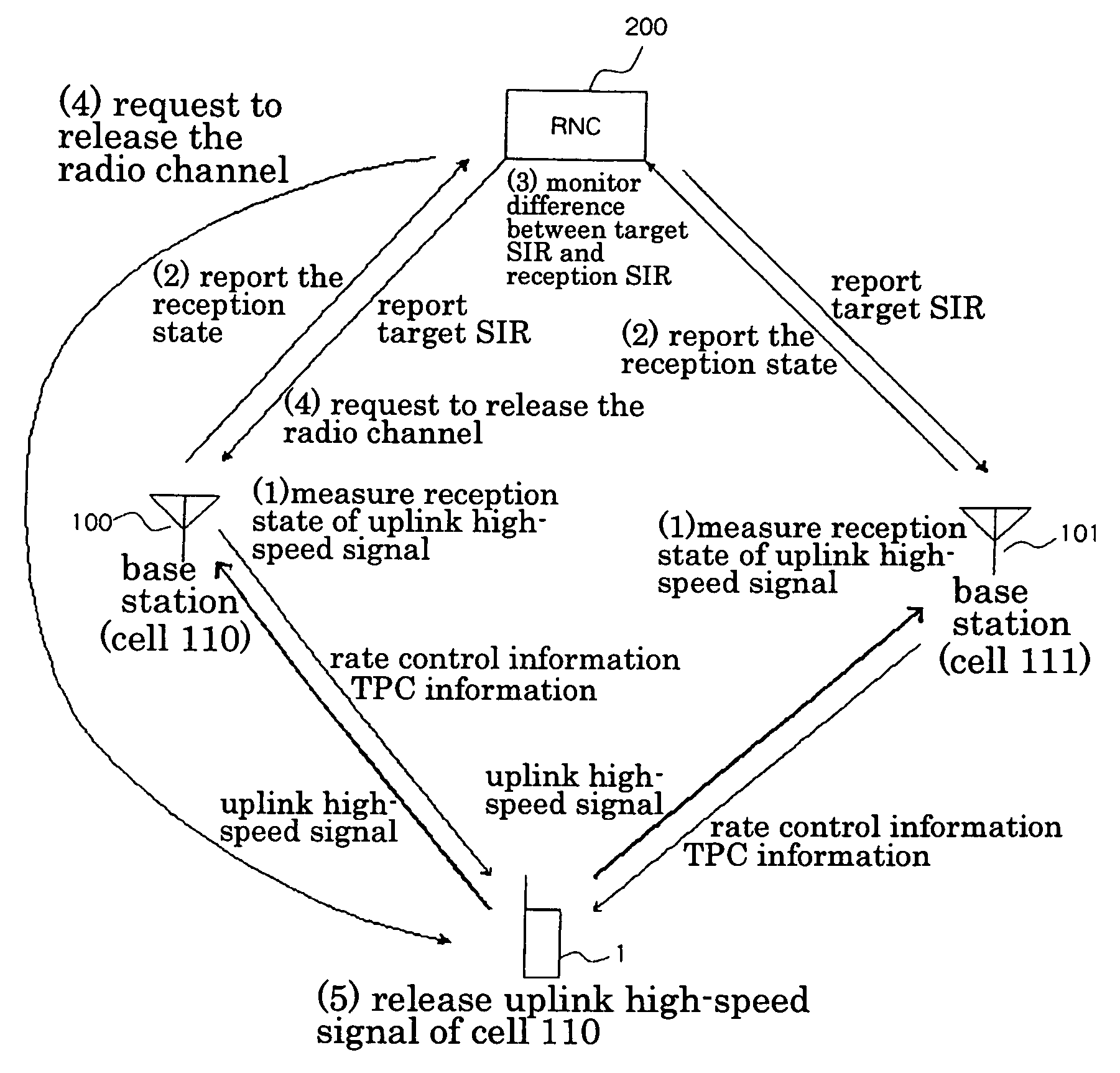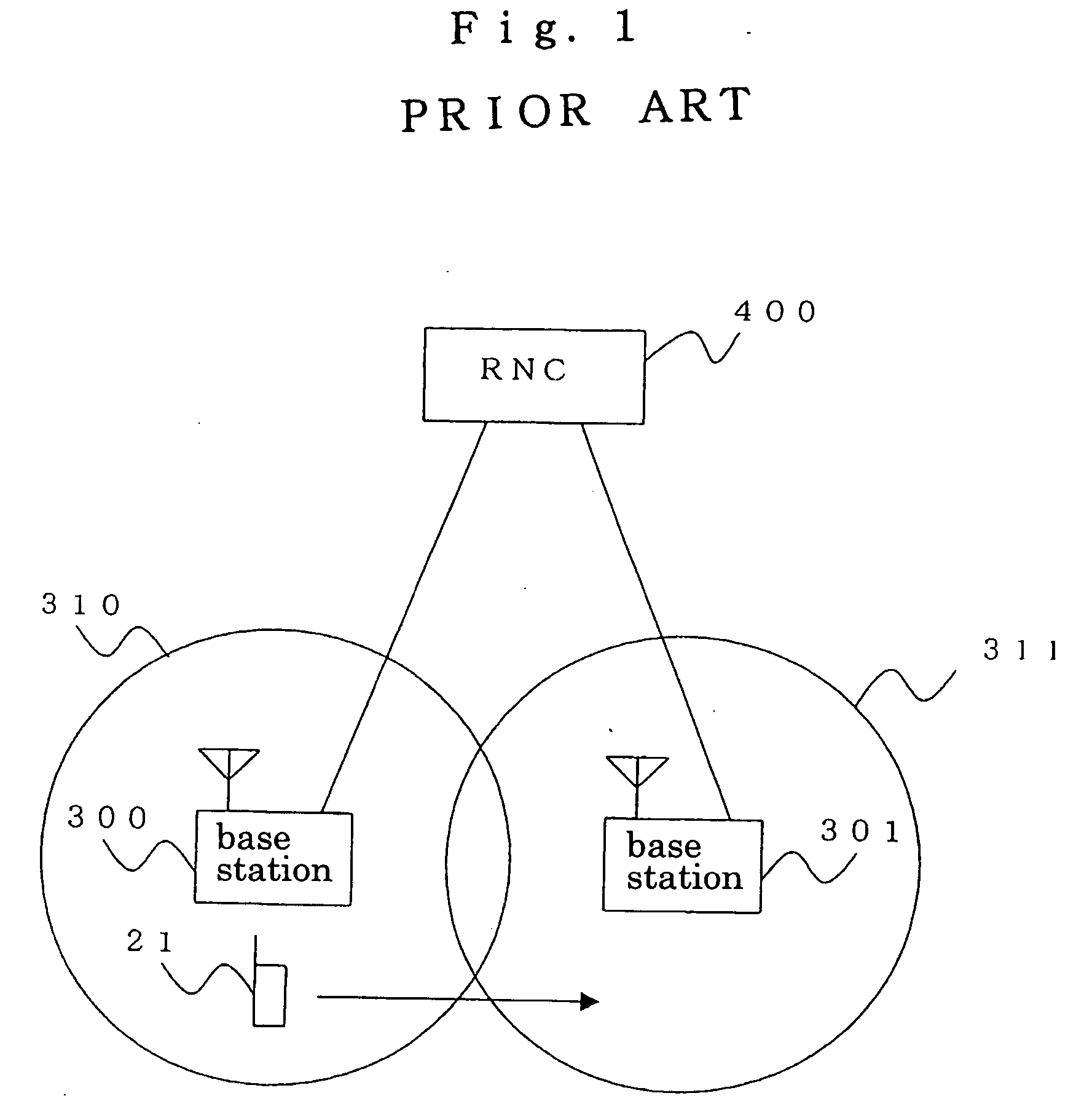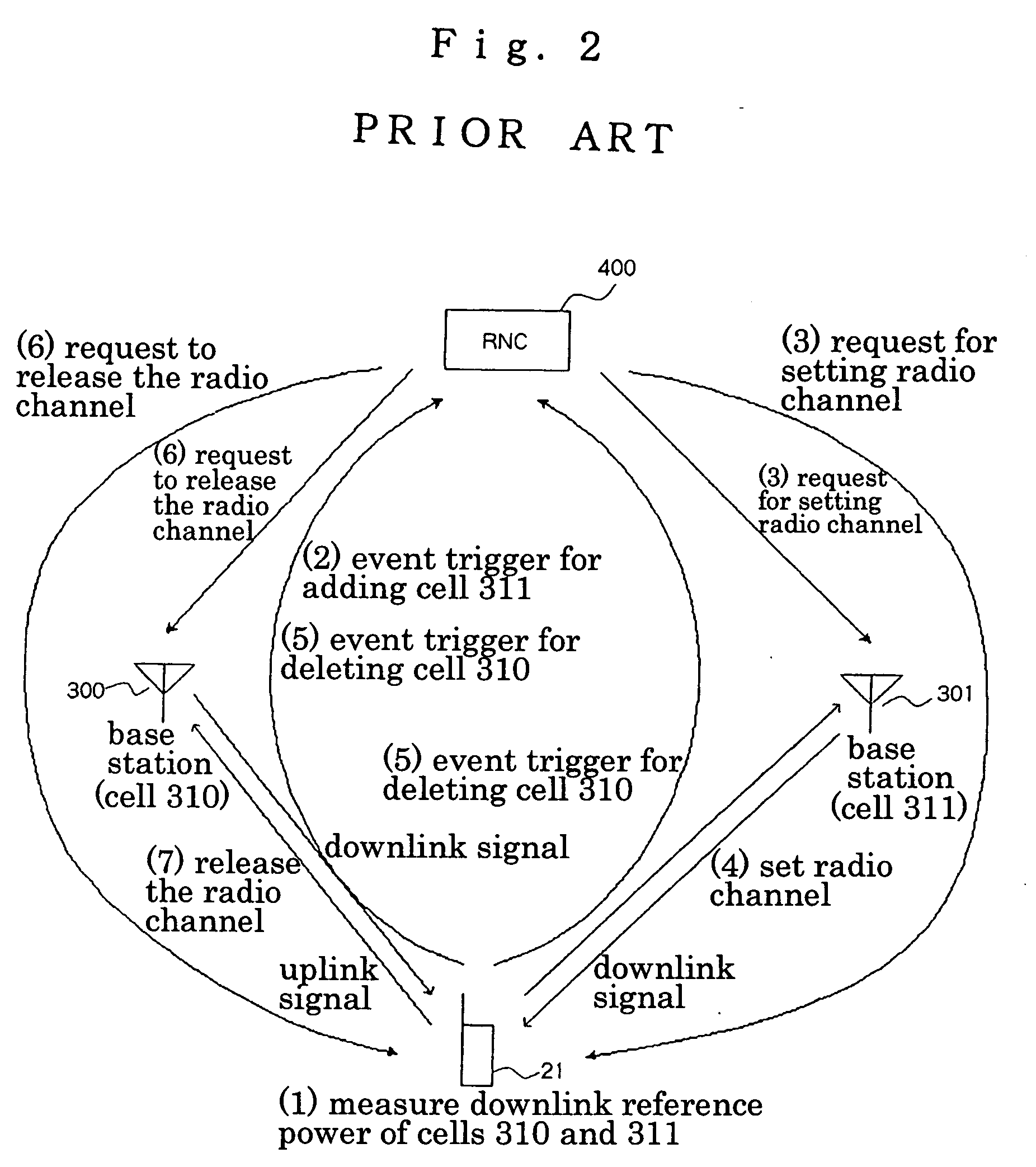Active set selection method for determining cells to be deleted from an active set based on the reception state of an uplink high-speed signal
a high-speed signal and active set technology, applied in the direction of radio transmission, electrical equipment, assess restriction, etc., can solve the problems of not being able to include in the active set cells in which effective radio lines are set for the uplink high-speed signal, waste of hardware resources, and pointless assignment of hardware resources to the mobile terminal, so as to minimize the radio resources
- Summary
- Abstract
- Description
- Claims
- Application Information
AI Technical Summary
Benefits of technology
Problems solved by technology
Method used
Image
Examples
first embodiment
[0055]FIG. 4 shows the method by which an RNC performs deletion control of an active set when base stations that constitute the cells in an active set are receiving an uplink high-speed signal from a mobile terminal when the uplink high-speed signal is in the handover state.
[0056] The CDMA mobile communication system of the present embodiment is provided with RNC (Radio Network Controller) 200 and base stations 100 and 101. The following explanation regards a case in which mobile terminal 1 moves from cell 110 that is made up by base station 100 to cell 111 that is made up by base station 101.
[0057] As shown in FIG. 4, base stations 100 and 101 that constitute cells 110 and 111 that are included in the active set for mobile terminal 1 not only transmit downlink control signals for designating the transmission power and transmission rate for the uplink high-speed signal from mobile terminal 1, but also measure the reception state (for example, the reception SIR (Signal-to-Interfere...
second embodiment
[0071] The following explanation regards the active set selection method according to the second embodiment of the present invention.
[0072] In the active set selection method according to the first embodiment described hereinabove, the RNC took the lead in the deletion of the active set based on the reception states of an uplink high-speed signal that are measured by base stations. In contrast, the active set selection method according to the second embodiment of the present invention presents a method for controlling deletion of the active set under the lead of the base stations.
[0073] When a mobile terminal performs handover between cells, base stations in the present embodiment measure the reception states of an uplink high-speed signal on the radio lines that are set with the mobile terminal, determine cells to be deleted from the active set in accordance with the measurement results of the reception states of the uplink high-speed signal that have been measured, and reports t...
third embodiment
[0092] The following explanation regards the active set selection method according to the third embodiment of the present invention.
[0093] In the above-described first and second embodiments, an active set deletion protection time was provided whereby, despite the fall of the reception SIR of the uplink high-speed signal in a particular cell to or below the active set deletion SIR threshold value, the cell was not deleted from the active set until the active set deletion protection time has elapsed. However, in the event of a drastic change in the radiowave state of a particular cell due to the movement of mobile terminal 1, it is sometimes preferable to delete the cell from the active set without waiting for the passage of the active set deletion protection time.
[0094] The active set selection method in this embodiment takes this type of case into consideration, and the RNC or each base station thus uses two values, a first active set deletion SIR threshold value offset and secon...
PUM
 Login to View More
Login to View More Abstract
Description
Claims
Application Information
 Login to View More
Login to View More - R&D
- Intellectual Property
- Life Sciences
- Materials
- Tech Scout
- Unparalleled Data Quality
- Higher Quality Content
- 60% Fewer Hallucinations
Browse by: Latest US Patents, China's latest patents, Technical Efficacy Thesaurus, Application Domain, Technology Topic, Popular Technical Reports.
© 2025 PatSnap. All rights reserved.Legal|Privacy policy|Modern Slavery Act Transparency Statement|Sitemap|About US| Contact US: help@patsnap.com



